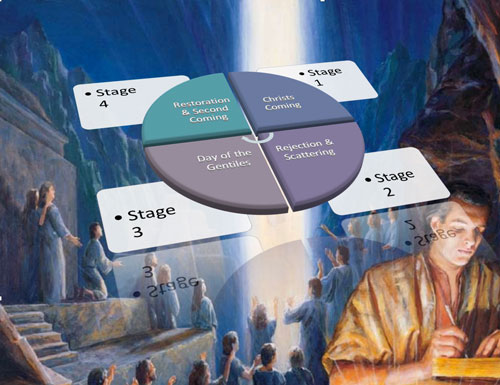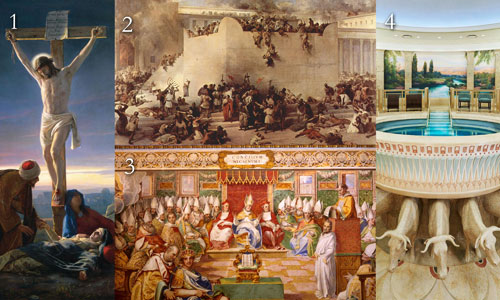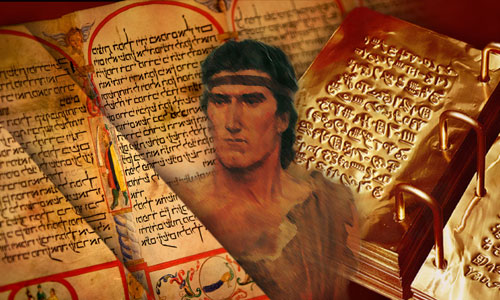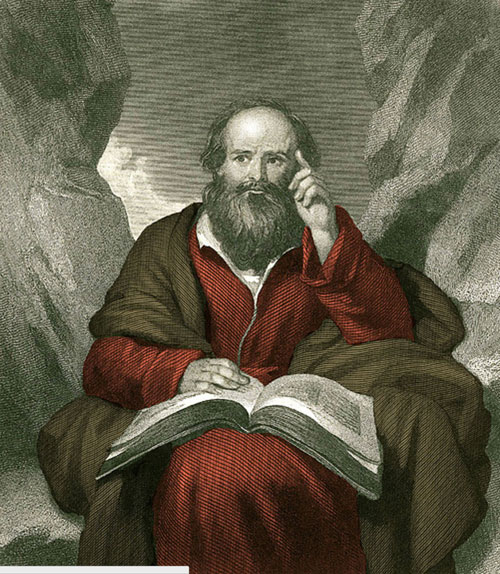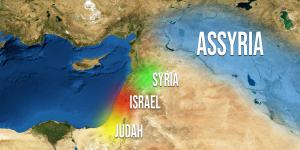You are here
What Vision Guides Nephi's Choice of Isaiah Chapters?

2 Nephi 11:2
The Know
The books of 1 and 2 Nephi include eighteen chapters of the Book of Isaiah (in addition to other quotations and paraphrases): Isaiah 2–14 and 48–51 either fully or in part. Nephi includes these passages from Isaiah in his record in order to help his audience understand important prophecies from the Lord regarding the future of the human race.1
Using his vision recorded in 1 Nephi chapters 11–14 as a framework, Nephi uses Isaiah as a witness to the visions of the future that he had also received from the Lord. Latter-day Saint scholar John W. Welch termed this “the Nephite prophetic view.”2
Welch explained that there are four stages of this worldview that are apparent in 1 Nephi 11–14:
- Stage 1: Christ’s coming (1 Nephi 11);
- Stage 2: his rejection and the scattering of the Jews (1 Nephi 12);
- Stage 3: the day of the Gentiles (1 Nephi 13); and
- Stage 4: the restoration of Israel and the ultimate victory of good over evil (1 Nephi 14).3
This insight offers power in interpreting not only the words of Isaiah but also the prophetic outlook of all writers in the Book of Mormon.
For example, Nephi’s brother, Jacob, conveniently and consciously summarizes the four stages of the Nephite prophetic view in seven verses right near the beginning of his impressive covenant speech in 2 Nephi 6–10.
- 2 Nephi 6:9 (Stage 1, Christ’s coming): “the Lord God … should manifest himself unto them in the flesh”
- 2 Nephi 6:10 (Stage 2, Christ rejected): “after they have hardened their hearts … against the Holy One of Israel … they shall be smitten and afflicted”
- 2 Nephi 6:11-13 (Stage 3, the day of the Gentiles): “And blessed are the Gentiles … if it so be that they shall repent and fight not against Zion … they shall be saved”
- 2 Nephi 6:14-15 (Stage 4, restoration and victory): “the Messiah will set himself again the second time to recover them; … he will manifest himself unto them in power and great glory”
This prophetic overview of God’s plans for the House of Israel and all humanity lines up with and informs Nephi’s and Jacob’s understanding of Isaiah’s prophecies. When Nephi includes passages from Isaiah in his writing, he chooses chapters and verses that align with this prophetic view.
For example, the last four chapters of 1 Nephi deal with the future of Nephi’s people in their new land of promise.4 The order of the topics in these four chapters, 1 Nephi 19-22, tightly follow the order the same four stages found in 1 Nephi 11–14 and 2 Nephi 6.
Along with his presentation of this prophetic pattern, Nephi quotes Isaiah 48 and 49, which correspond to stages 2 and 3, respectively.
- 1 Nephi 19 (Stage 1): Christ’s coming, mission, suffering, crucifixion
- 1 Nephi 20/Isaiah 48 (Stage 2): rejection of Christ by the Jews, their scattering
- 1 Nephi 21/Isaiah 49 (Stage 3): the Lord’s plans for the Gentiles
- 1 Nephi 22 (Stage 4): the restoration of Israel and God’s victory over evil
The book of 2 Nephi contains a large block of quoted material, consisting of Isaiah 2–14. The following illustrates how the chapters from Isaiah that Nephi chose to utilize can be aligned with elements in his paradigmatic four-stage prophetic view. Nephi will make this alignment evident as he interprets these passages in 2 Nephi 25-30, as is briefly illustrated as follows:
- 2 Nephi 12-14/Isaiah 2-4 (Stage 4): the day of the Lord, the law going forth, the victory over evil (see 2 Nephi 29-30)
- 2 Nephi 15/Isaiah 5 (Stages 2 and 3): Jews taken into captivity, God’s wrath not turned away; “he will lift up an ensign to the nations” and 2 Nephi 16/Isaiah 6 (Stage 2): Jews reject Gospel, Lord has “removed men far away” (see 2 Nephi 26-27)
- 2 Nephi 17/Isaiah 7 (Stage 1): “A virgin shall conceive, and shall bear a son, and shall call his name Immanuel” (see 2 Nephi 25)
- 2 Nephi 18/Isaiah 8 (Stage 3): Gentile powers have success over Israel
- 2 Nephi 19/Isaiah 9 (Stage 1): “The people that walked in darkness have seen a great light” … “For unto us a child is born, unto us a son is given”
- 2 Nephi 20-24/Isaiah 10-14 (Stage 4): “The Lord shall set his hand again the second time to recover the remnant of his people”; Babylon, the wicked and proud will be destroyed; Lucifer will be brought down; “the Lord hath founded Zion, and the poor of his people shall trust in it” (see 2 Nephi 29-30)
The Why
For many reasons, it is important and helpful to read Isaiah intelligently and insightfully. The Savior has commanded all people to take the words of Isaiah seriously. In 3 Nephi, Christ told the Nephites specifically:
And now, behold, I say unto you, that ye ought to search these things. Yea, a commandment I give unto you that ye search these things diligently; for great are the words of Isaiah (3 Nephi 23:1).
Attempting to get through the Isaiah chapters in 1 and 2 Nephi, however, is often considered one of the most difficult aspects of reading the Book of Mormon and, as a result, their sacred and significant messages are often bypassed.
That is why Nephi’s prophetic worldview is so helpful. Understanding the Isaiah chapters is considerably easier when the reader utilizes a framework such as this.
This is only one tool that can help even novice readers to get more out of their reading of Isaiah. But what better guide could a reader hope for than Nephi’s prophetic view and interpretive lens?
Nephi, through his faithfulness to the Lord, was blessed with a comprehensive vision of how history would play out for the human race, both for the House of Israel and for all the nations. He knew that the Prophet Isaiah had also been given incredible insight into these same future events and used his words as another witness to his prophecies.
Only a person with deep familiarity with a complicated text can summarize its contents concisely and incisively. And only an author who had seen such an overview of the prophetic framework for the history of God’s covenant people could render and utilize such a summary so effectively as one finds in the writings of Nephi. Better than any other accounting that has been suggested, all this explains why Nephi chose to quote the specific chapters from Isaiah that he did.
Further Reading
John W. Welch, “Getting through Isaiah with the Help of the Nephite Prophetic View,” in Isaiah in the Book of Mormon, ed. Donald W. Parry and John W. Welch (Provo, Utah: FARMS, 1998), 19–45.
John W. Welch and J. Gregory Welch, Charting the Book of Mormon: Visual Aids for Personal Study and Teaching (Provo, Utah.: FARMS, 1999), charts 96-99.
- 1. The appearance of passages in the Book of Mormon from sections of the book of Isaiah labeled by scholars as “Second Isaiah” (Isaiah 40–55) has been the source of some criticism. It is beyond the scope of this KnoWhy to address these issues. For one take on the matter, please see John W. Welch, “Authorship of the Book of Isaiah in Light of the Book of Mormon,” in Isaiah in the Book of Mormon, ed. Donald W. Parry and John W. Welch (Provo, UT: FARMS, 1998), 423–437.
- 2. John W. Welch, “Getting through Isaiah with the Help of the Nephite Prophetic View,” in Isaiah in the Book of Mormon, ed. Donald W. Parry and John W. Welch (Provo, UT: FARMS, 1998), 19–45.
- 3. Welch, “Getting through Isaiah,” 22.
- 4. Welch, “Getting through Isaiah,” 24.
KnoWhy Citation
Related KnoWhys
Subscribe
Get the latest updates on Book of Mormon topics and research for free


